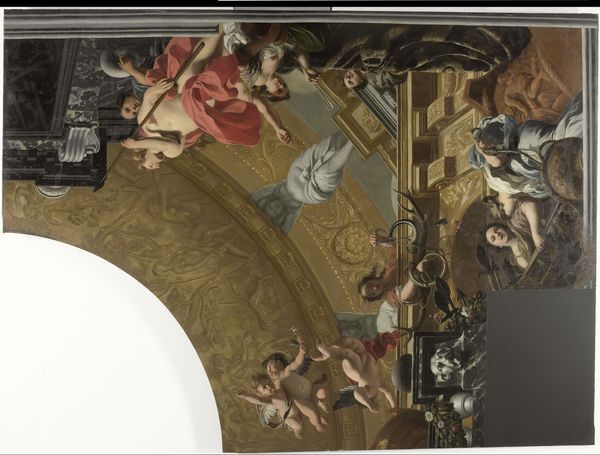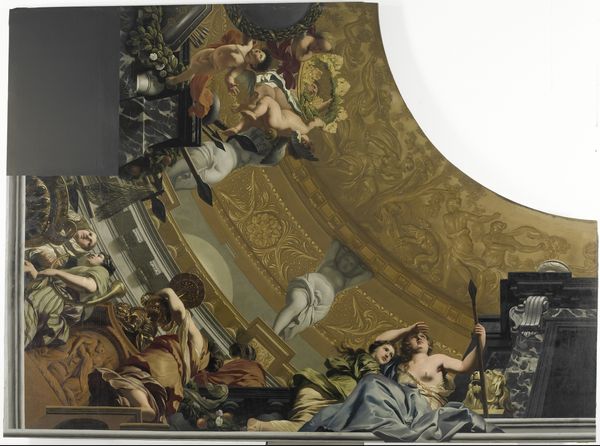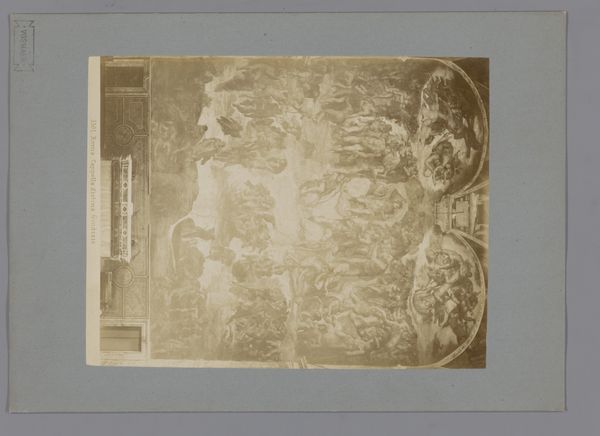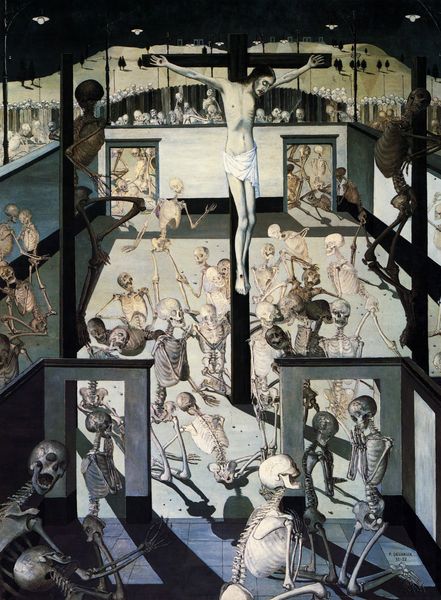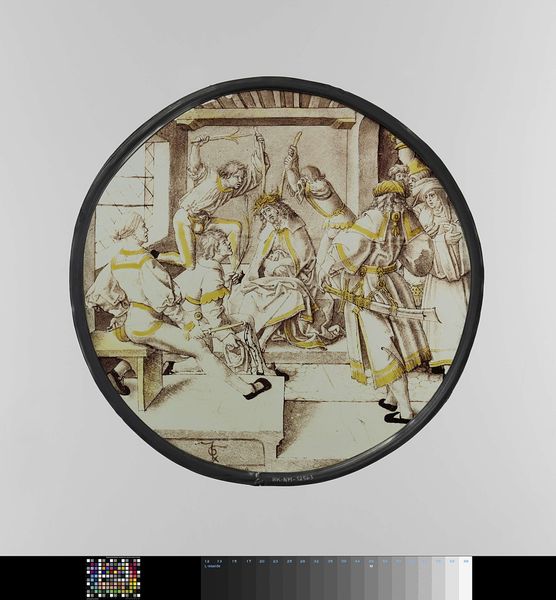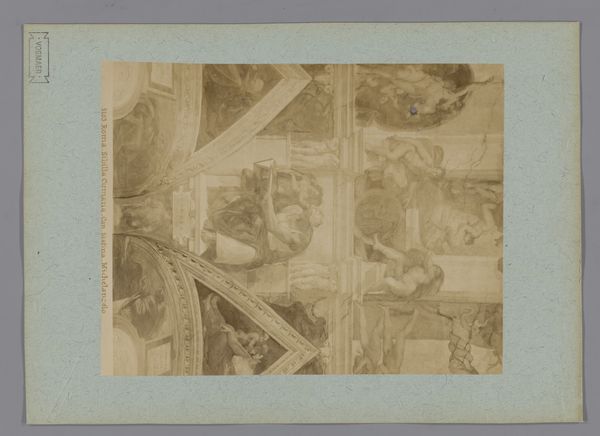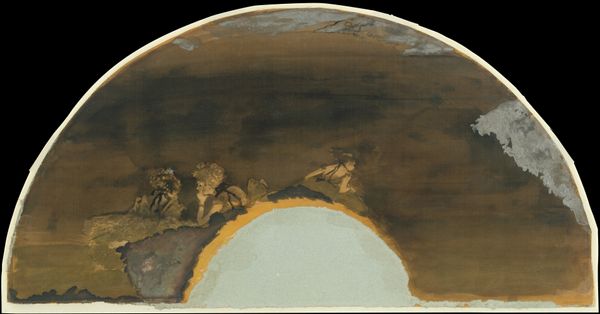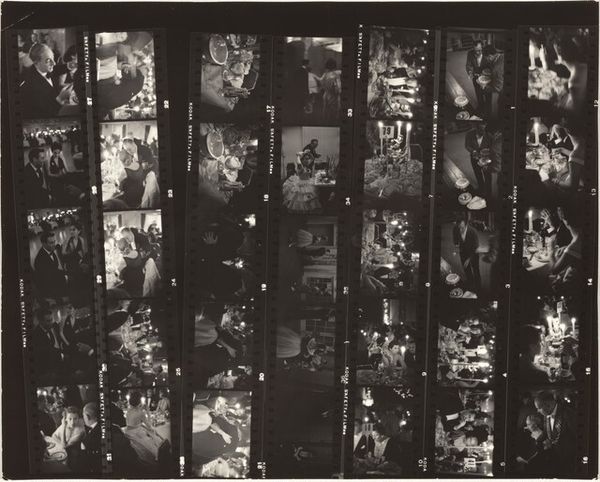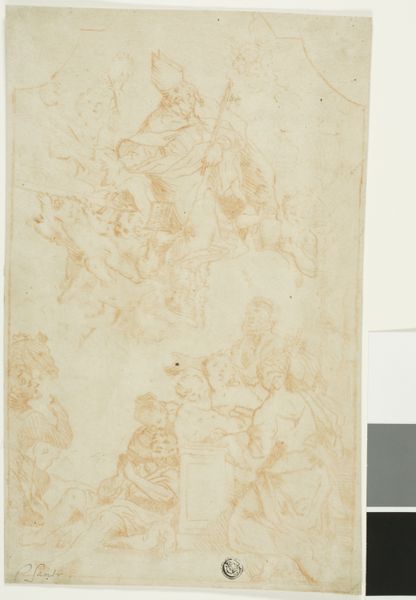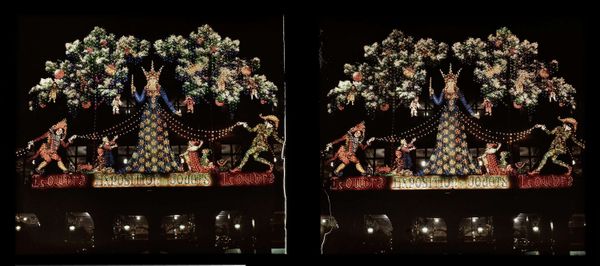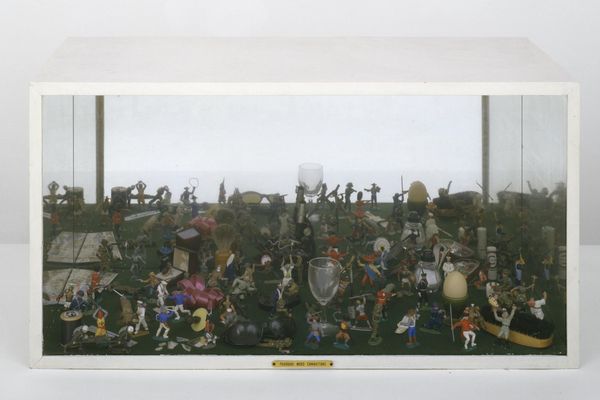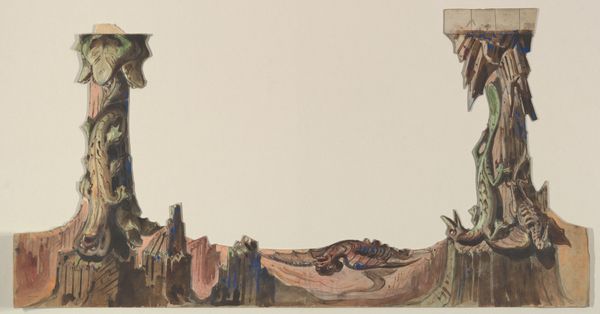
Onderdeel (linksboven) van een plafondschildering met als hoofdvoorstelling Diana en haar gezellinnen c. 1676 - 1682
0:00
0:00
painting, fresco
#
portrait
#
allegory
#
baroque
#
painting
#
sculpture
#
figuration
#
fresco
#
history-painting
Dimensions: height 290.5 cm, width 394.5 cm, depth 4 cm, weight 60 kg
Copyright: Rijks Museum: Open Domain
Curator: This fragment before us, created circa 1676-1682, is a section of a ceiling painting by Gerard de Lairesse, entitled "Onderdeel (linksboven) van een plafondschildering met als hoofdvoorstelling Diana en haar gezellinnen," currently residing here at the Rijksmuseum. Editor: Wow, my neck already hurts just imagining having to crane my head up to see it! But seriously, it feels incredibly lush and… well, creamy, I suppose, is the first word that pops into my head. Curator: “Creamy” is apt, I think, for Baroque sensibilities often utilized a warm and sensuous palette, mirroring the era’s cultural opulence. It’s crucial to remember, too, the symbolism inherent in such commissions. Lairesse, like many artists of his time, layered meaning. We have the allegorical figures referencing classical mythology. Diana, the goddess of the hunt, and her female companions—these women are figures of strength and independence. Editor: Independence, hmm? Surrounded by cupids and weaponry. Okay, I see your point. But even as a fragment, it really hits you with the theatrical drama! I mean, everyone is in motion and looking away—except for one figure glaring down from center frame! You can really imagine the space it comes from must be opulent, or attempting to give off the air of it, at the least! It feels like a celebration of power and idealized beauty, you know? But from whose perspective? And for whose enjoyment? I keep asking myself. Curator: Exactly, it prompts those questions. Who is empowered in this composition? And to whose delight is it pitched? That is where contemporary readings open the doors for fresh discourse on gendered power dynamics within these historical narratives. Lairesse here taps into established iconographies, using art to not only please but also project a narrative that aligned with the socio-political agendas of his patrons. Editor: Which puts quite a different slant on those idealized figures of goddesses and powerful women. You can begin to see the figures and painting, not only as symbols, but as social mirrors, as well, mirroring a desire that only existed to be consumed! Fascinating! Curator: Yes, fascinating, especially when we unpack the complexities that Baroque art offers in discussions of representation, authority, and desire. Editor: I feel as though I’m seeing more in it the longer we talk about it.
Comments
No comments
Be the first to comment and join the conversation on the ultimate creative platform.
